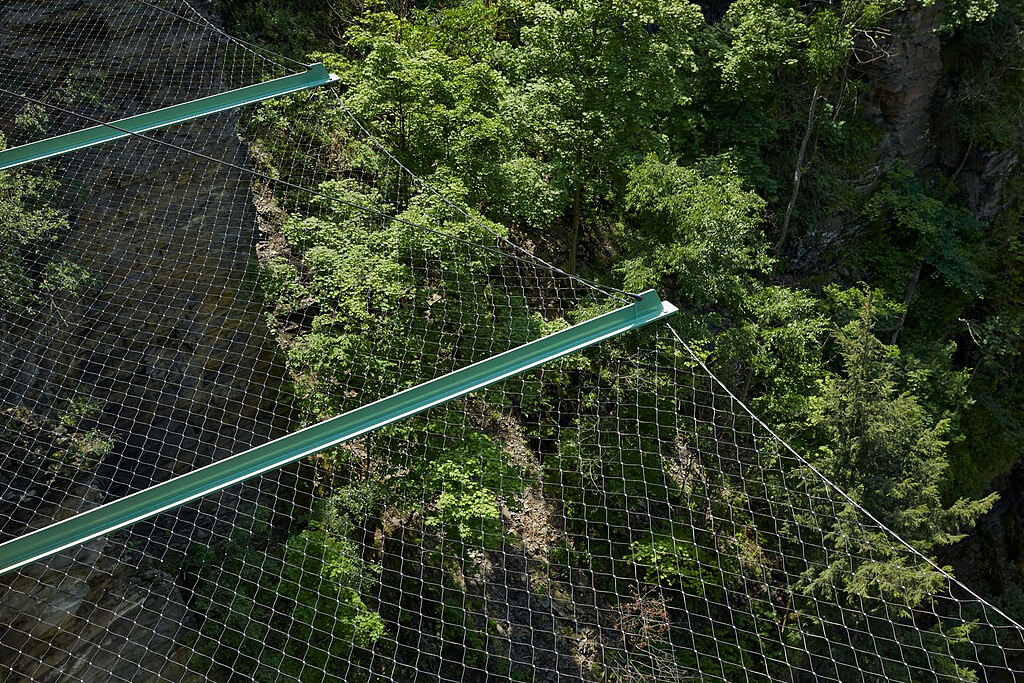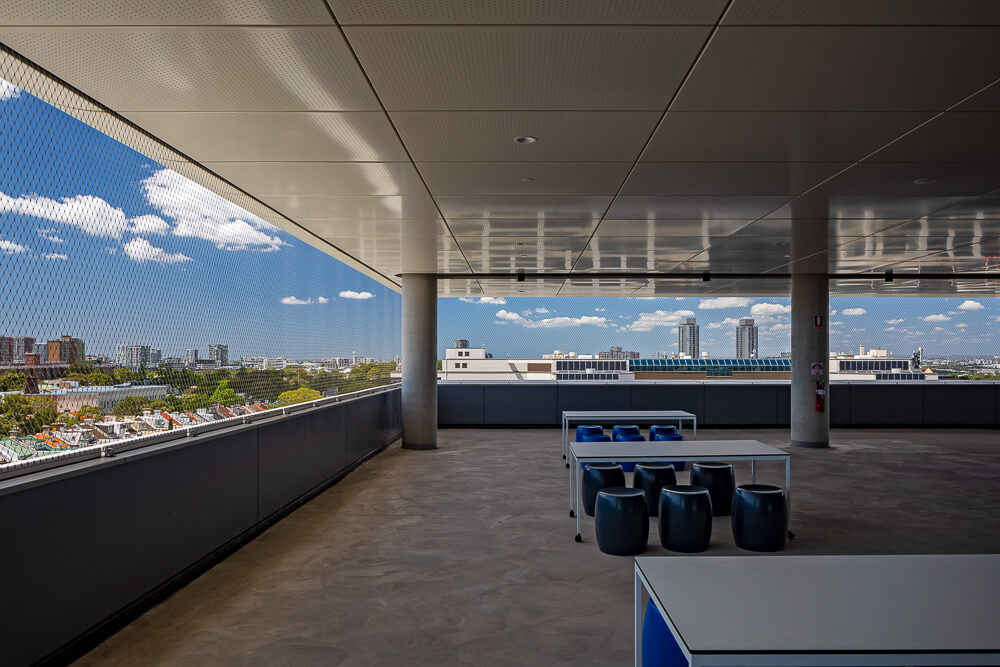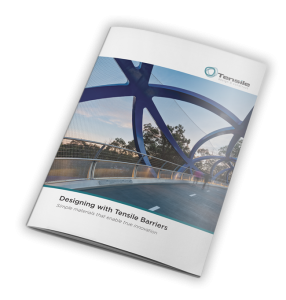In high-rise architectural structures where fall-protection is required, there can be a tension between aesthetics and safety.
While safety has to be the priority, the last thing you need is a heavy wall or barrier spoiling the view, blocking the light, or compromising the design. So the question in these instances is where to find a solution that can meet safety codes, while being light and unobtrusive in appearance.
Jakob’s Webnet mesh stainless steel safety net for high-rise buildings offers a solution that can meet both needs. And it can be used not only for high-rise buildings, but also for staircases, sports stadiums, climbing towers, lookouts, monuments, bridges and more.
The advantages of Webnet mesh high-rise safety nets
Webnet mesh combines strength, robustness and longevity with a light and translucent appearance. So, you could call it the perfect fit – certainly for many installations!
It is also highly customisable and malleable and can be coloured to suit the individual project.
Here are some examples of how it can be used.
Fall protection nets
Webnet can be used for vertical safety netting on high-rise buildings to prevent falls from height. This includes in shopping centres, schools and colleges, office blocks, and residential towers.
With its large span capability, the mesh can be installed with a minimum of posts intruding into the space. An example is the Inner Sydney High School rooftop basketball court. This area required overhead and wall nets that would span 26m in the absence of existing supports. So, in response, we created a post-and-cable design to support the mesh. The mesh looks light and elegant while actually being incredibly robust.
In addition, vertical safety nets were required for the multi-storey building’s outdoor terraces. But it was important the nets would not interfere with views and natural light. We installed C5 crowd load vertical netting which runs across six levels from floor to ceiling, providing the required safety without compromising on appearances or outlook.
Webnet can also be used to create horizontal safety nets, such as on helicopter landing pads and under bridges. An example of this is the suicide prevention nets under the gorge bridges at Cornell University in New York.

Image Source: ArchDaily
Anti-throw screens
When objects (e.g. rocks) are thrown or fall over the edge of bridges onto vehicles or pedestrians below, it can result in serious injuries, accidents or even deaths.
In some regions, local road and rail authorities will mandate that a pedestrian bridge has an anti-throw screen. This is often based on past incidents and how built-up the area is.
Stainless steel mesh can be used to create near-transparent yet highly robust anti-throw screens on footbridges to prevent objects being thrown or falling below. Like the Lachlan Line pedestrian bridge in Sydney for example – where anti-throw screens run the length of the structure. The screen meets all safety requirements while allowing for clear views, and without marring the unique sculptural design.
Monument protection
Historic buildings and monuments sometimes need safety nets for protection that simultaneously allow the visiting public to view them clearly.
Webnet can be an ideal solution for this as its malleable nature allows it to be used to wrap around structures or to create crowd-rated enclosures.
If you would like to discuss how stainless steel safety net for high-rise buildings could be applied to your project, please get in contact with our team.






































